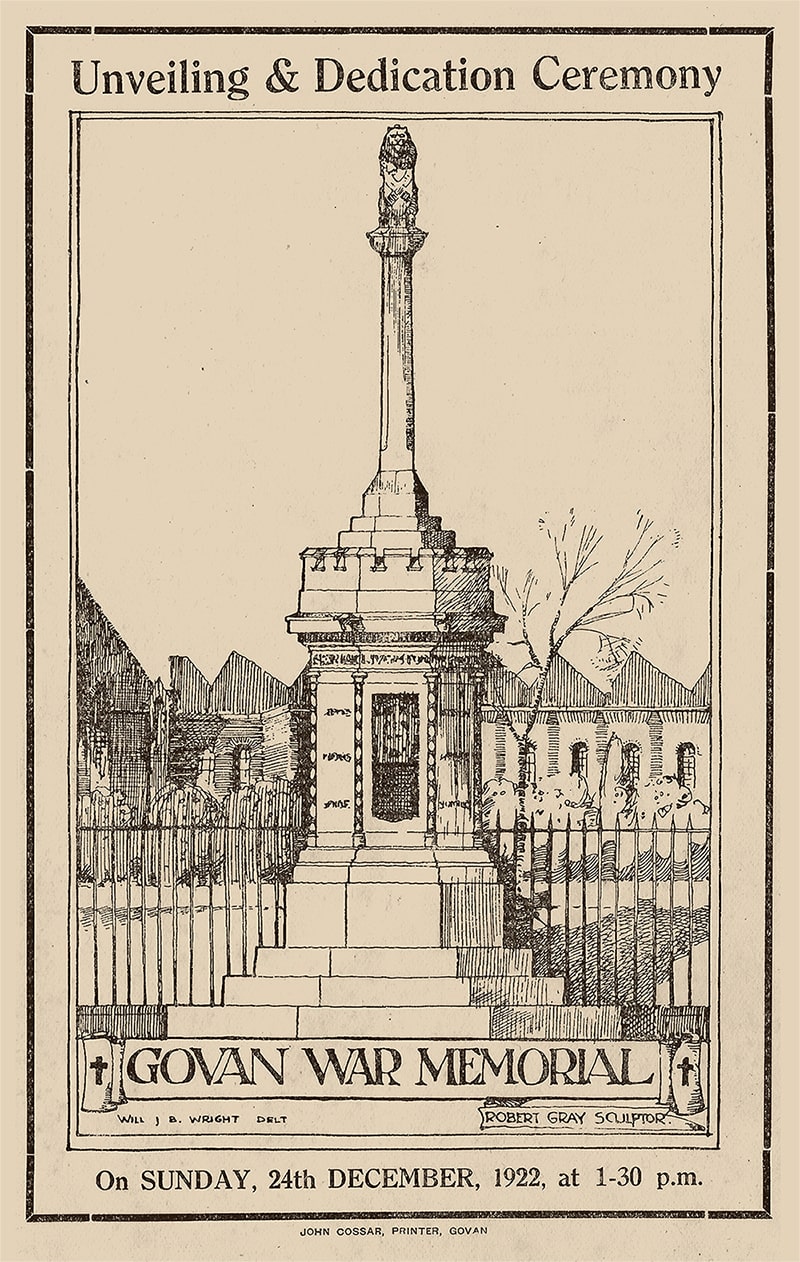The Unveiling
The Govan War Memorial was unveiled on Christmas Eve 1922, a little over three years after the end of the War. On December 22nd the Govan Press, looking ahead to the unveiling, regarded the site of the War Memorial as “surely the most appropriate that could have been found”, noting that it had been “holy ground for thirteen centuries”.
The war memorial itself - 22 feet high and of Creetown granite in Scots Baronial style - was described as “peculiarly appropriate and essentially Scottish [taking] the form of a Mercat Cross”. Created by Glasgow-based sculptor Robert Gray – also responsible for the K13 Memorial Drinking Fountain in Elder Park - the monument is octagonal in shape with the names of the major military engagements of the war inscribed on four of the eight sides: Falkland Islands, Jutland and Zeebrugge; Ypres, Somme, Mons, Loos, Palestine, Mesopotamia, Gallipoli, Salonika and Paschandael (sic).
The unveiling by Major the Right Honourable the Lord Blythswood took place “in presence of a huge concourse, numbering several thousands of the general public”. The Govan Press noted the crowd was so large that “Govan Road was entirely blocked” and that people found vantage points where they could, including atop a tramcar “which was held up by the crowd”. Even the elements appear to have accommodated the unveiling ceremony. Described as “lowering skies and a hail-laden west wind” in the run up to the scheduled start time, “just before the ceremony commenced the sky cleared somewhat and…a rainbow appeared arched over the Parish Churchyard and the rain kept off until the ceremony was over.”

Lord Blythswood’s speech focused on the importance of remembrance, including a reference to “the men and women at home who supplied ships and material to carry on the great struggle”. Other speakers included the Reverend Peter Smith and ex-Bailie James Whitehead, who described the process of establishing the War Memorial as having been achieved “despite adverse criticism”. Once the War Memorial had been unveiled, a Mrs Ryan was asked to deposit the casket – Mrs Ryan’s family having lost four members to the War - and a Mrs Whittaker added a number of coins. There then followed a prayer of dedication, two minutes silence, the sounding of the Last Post and the laying of wreathes.
The Roll of Honour
A silver-plated copper cylinder or “casket”, provided by Mr James Somerville J. P., was placed in a cavity of the War Memorial on the day of its unveiling. The casket bore the inscription “Roll of Honour of officers, non-commissioned officers and men of Govan who fell in the Great War, 1914-1919. Their names liveth forever”. Inside it held a red-leather bound Roll of Honour, bearing the names of 1122 Govan men who died during the conflict, together with a copy of the Govan Press containing a report of the public meeting held in the Police Chambers, Albert Street (now Orkney Street). Each member of the War Memorial Committee was given a duplicate of the Roll of Honour.

